- AUDIO ONE-TO-ONE Call Now: 210-805-9927
- Contact
- Register
- My Account
VIBRATION: ORIGINS, EFFECTS, SOLUTIONS
Not enough has been written concerning the effects of vibration on high-end audio components. I am surprised. Unwanted vibrations have a serious, adverse impact on the performance of most, if not all, modem audio and video equipment. The reduction or removal of these vibrations can significantly improve the resolution of every system. I offer my observations on the topic in the hopes that you may enjoy some of the same improvements I have gained in my own system from the implementation of the methods to follow.
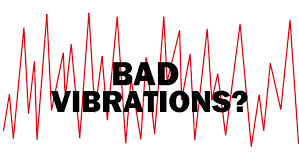 All of us have seen attempts at vibration control. Soft, resilient feet, spiked feet, cones, isolation bases, turntable suspensions, tube damper rings, etc., are just a few of the many ways manufacturers deal with the vexing problem of vibration control. Here, we will examine each in the context of their specific contribution to the control of unwanted vibrations. But first, let us explore the interesting and complex phenomenon of vibration itself.
All of us have seen attempts at vibration control. Soft, resilient feet, spiked feet, cones, isolation bases, turntable suspensions, tube damper rings, etc., are just a few of the many ways manufacturers deal with the vexing problem of vibration control. Here, we will examine each in the context of their specific contribution to the control of unwanted vibrations. But first, let us explore the interesting and complex phenomenon of vibration itself.
The vibrations that cause us such great concern, are those that comprise the very nature of our hobby - sound. Our loudspeakers produce sound by the motion of their drivers, creating compressions and rarefactions of air molecules within the room. The eardrum vibrates in sympathy with these modulations of the air. Electrical impulses are sent to the brain, and there interpreted into meaningful, recognizable sound.
In the same way that the modulation of the air causes our eardrums to move in sympathy, so too they produce motion in all objects they encounter. If the amplitude of these motions is sufficient, and vibration within the component occurs audible degradation results. Therein lies the rub.
Three major types of vibration will occupy our discussions. These vibrations reach our equipment via two distinctly different paths, hence their names: structure-borne, airborne, and self-induced or internal vibration. Structure borne vibrations enter through the shelf or platform upon which the component rests. Airborne vibrations are the results of fluctuating air currents produced by the loudspeakers, which vibrate the enclosure of the component. Self-induced vibrations are generated within the component either by mechanical devices (CD drives, transports, etc.), and smaller micro-vibrations generated by transformers.
The three types of vibration differ considerably in terms of the methods necessary to control them. First, let us examine airborne vibration, it is created, and how we can deal with it.
Air-borne Vibration:
As we have seen, a speaker produces sound by moving air. Sound within the room causes vibrations-and/or resonances in the chassis, circuit board (s), and individual component parts of all electronic equipment. These vibrations 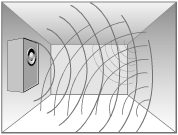 induce various distortions in the signal, causing masking or veiling of the music to occur. Audiophiles have long been aware of the sensitive nature of tubes and tubed electronics to vibration. This condition has been termed microphonics when applied to the tube itself. Indeed, simply tapping on the glass envelope of a vacuum tube, or on the chassis of a very sensitive unit, produces audible emanations from the loudspeakers. In much the same way, but on a smaller scale, airborne (and structure-borne) vibrations will subtlety affect the sound produced by these units.
induce various distortions in the signal, causing masking or veiling of the music to occur. Audiophiles have long been aware of the sensitive nature of tubes and tubed electronics to vibration. This condition has been termed microphonics when applied to the tube itself. Indeed, simply tapping on the glass envelope of a vacuum tube, or on the chassis of a very sensitive unit, produces audible emanations from the loudspeakers. In much the same way, but on a smaller scale, airborne (and structure-borne) vibrations will subtlety affect the sound produced by these units.
In the same way vacuum tubes are sensitive to external vibration, so to, I believe, solid-state and passive components are too. Capacitors (in particular), resistors, transistors, and the like are sensitive, at least to some degree, to the influence of vibration. More and more we are seeing designers take these concepts into consideration when designing a new product. Chassis damping, improved structural rigidity/integrity, and individual component damping are now almost commonplace.
Physical orientation (i.e. placement within the room) may well be the most crucial aspect in reducing unwanted colorations induced by airborne vibration.
The areas of greatest air pressure (hence the loudest sounds), will be the worst areas for placement of sensitive equipment - especially CD players and turntables. Ultimately, the placement of all sensitive components in a room separate from the speakers would be ideal. If this approach is practical in your situation, I would recommend it. Short of that, keep your equipment out of comers and as far away from the loudspeakers as circumstances permit. Additionally, be sure that you select a stable non-resonant mounting surface for all your components. We will examine this aspect in more detail later.
Structure-borne Vibration:
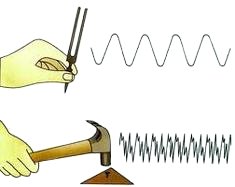 Structure boom vibrations affect equipment in much the same way as do their airborne counterparts, and generally to a greater degree. These vibrations create various colorations and distortions that blur or veil the music, confuse the image, and generally wreak sonic havoc. Luckily, the control methods necessary to deal with structure born vibrations are more straightforward, and easily employed, than those measures needed to manage airborne vibration. In general, all we need to is effectively isolate the equipment from its resting place. While it may prove difficult to totally eliminate all structural vibrations, we can significantly reduce them with some simple to use, and readily available, techniques and materials.
Structure boom vibrations affect equipment in much the same way as do their airborne counterparts, and generally to a greater degree. These vibrations create various colorations and distortions that blur or veil the music, confuse the image, and generally wreak sonic havoc. Luckily, the control methods necessary to deal with structure born vibrations are more straightforward, and easily employed, than those measures needed to manage airborne vibration. In general, all we need to is effectively isolate the equipment from its resting place. While it may prove difficult to totally eliminate all structural vibrations, we can significantly reduce them with some simple to use, and readily available, techniques and materials.
We can divide resonance control and isolation products into three categories based on their mode of operation. Coupling, decoupling, and energy conversion
Coupling devices tightly marry the component to the shelf. They include cones, spikes, and the like. Spikes and cones, by decreasing the contact area with the support, (theoretically) act as a mechanical diode - allowing vibration to travel away from the component while limiting the return path. New materials now available (composite, ceramic, carbon fiber) seem to have improved cone performance over metal cones of the past.
De-coupling devices attempt to isolate the component from its resting place, usually with soft, resilient materials. Most audiophiles are familiar with soft de-coupling feet. These pliable, resilient, rubber-like pucks absorb vibrations, converting their motion to heat, dissipating their effect. Vibrapods are the most common today, their predecessors included Sorbothane (Audioquest) and NAVCOM (Sims Vibration Dynamics). Magnetic isolation is a form of de-coupling and this technology has been popularized by the Clear Audio Magix pods (now discontinued).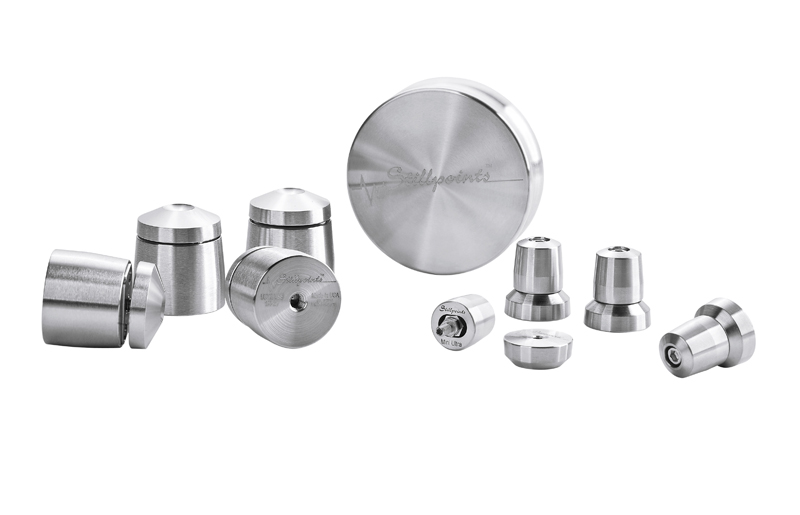
Energy conversion products convert mechanical energy to heat. Though soft de-coupling materials perform a similar function, there are energy conversion devices on the market that do not use viscoelastic materials. The best example is the Stillpoints. Some of the most effective devices on the market today, Stillpoints Stainless Steel isolation footers can offer significant sonic improvement.
Self-Induced Vibration:
Some damaging vibrations are created inside your stereo components. Obvious contributors would be CD drives, trays, and actuators whose mechanical movement creates vibrations that can travel through the structure, potentially affecting sensitive board-level circuit components. Less obvious, but in some ways more problematic, are transformers. All transformers vibrate and, just as with mechanical sources, the vibrations they create can influence sensitive circuitry.
At the manufacturing level, damping of equipment chassis and isolating internal components from vibration can offer truly amazing sonic results. Manufacturers are just beginning to scratch the surface of this very important aspect of equipment design/construction. In most designs, vibrations in the cabinet and/or chassis are readily transmitted to the sensitive circuitry within. These vibrations are the cause of quite serious sonic aberrations that significantly limit the sonic potential of the component. One might consider experimenting with surface mounted materials to damp chassis/cabinet resonances. The application of surface damping to the larger metal parts of equipment enclosures can greatly reduce vibrations and improve sound quality. Caveat: Due to inherent
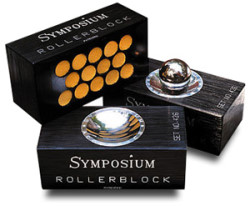 Sheets made from EAR Iso-Damp or Q-Pads can be applied to a variety of surfaces to provide damping. Some are available with adhesive backing, others can be attached with contact cement or simply applied without adhesive for temporary applications.
Sheets made from EAR Iso-Damp or Q-Pads can be applied to a variety of surfaces to provide damping. Some are available with adhesive backing, others can be attached with contact cement or simply applied without adhesive for temporary applications.
Another more elaborate method of surface damping employs an exotic material (borosilicate) that is applied like paint, hardening to form a stiff non-resonant barrier to mechanical vibrations. This approach is most often applied to the inside of loudspeaker enclosures as a means of increasing the rigidity of cabinet walls and thus reducing resonant modes. The effects of this treatment will vary with the material used, the enclosure quality, and the uniformity of application. Some speaker manufacturers use this type of material in the construction of their enclosures.
As mentioned previously, I believe capacitors, resistors, transistors, and other component parts are sensitive to vibration. Therefore, anything we can do to reduce vibration in these components could be sonically beneficial. To this end, we shall explore a few of the options available for the more ambitious tweaks among you.
Capacitors, in particular, are sensitive to mechanical vibration. A few manufacturers attempt to control extraneous movements by gluing these parts to the circuit boards. This method, 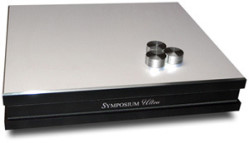 however, will only be effective if the circuit board has been effectively decoupled from the chassis. This usually is not the case. Alternately, damping the part itself by the application of surface treatments has proved beneficial. Strips of Q-Damp or Iso-Damp are well suited to this task. If you are so inclined, experiment by placing small strips of damping material on capacitors in critical areas of the circuit. Additionally, you may want to consider isolating and/or damping the circuit board itself. This measure is especially effective in the case of tubed electronics. Note: One should only attempt these modifications if they feel comfortable with the task.
however, will only be effective if the circuit board has been effectively decoupled from the chassis. This usually is not the case. Alternately, damping the part itself by the application of surface treatments has proved beneficial. Strips of Q-Damp or Iso-Damp are well suited to this task. If you are so inclined, experiment by placing small strips of damping material on capacitors in critical areas of the circuit. Additionally, you may want to consider isolating and/or damping the circuit board itself. This measure is especially effective in the case of tubed electronics. Note: One should only attempt these modifications if they feel comfortable with the task.
Another method often reported as effective in tubed gear involved the use of tube damper rings. These compliant rings are placed around smaller signal tubes to damp vibrations in the glass envelope. Several varieties are available, each with its own set of advantages and drawbacks. Wider designs do a good job of damping due to the large contact area. The larger contact area, however, leads to increased internal envelope temperatures that may significantly shorten tube life. Smaller cross-sectional rings made of rubber avoid the heating problems but do a poor job of damping. We have adopted a unit featuring a small cross-section but made from high-temperature silicone that exhibits good damping properties. The silicone acts as a bit of a heat sink, actually drawing heat away from the tube.
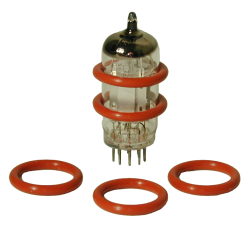 To further isolate tubes, a special isolated socket has been produced by the Canadian firm PEARL. The Iso-Socket is designed to replace existing seven and nine pin sockets with a de-coupled unit employing silicone foam or Sorbothane. These devices do an excellent job of isolating the tube from structure-borne vibrations. Their use, however, does require soldering, and so should be left to qualified individuals. Additionally, this and other electrical modifications should be considered in the context of their effect on the manufacturer's warranty. This procedure may void your warranty, check with the manufacturer if you have any questions.
To further isolate tubes, a special isolated socket has been produced by the Canadian firm PEARL. The Iso-Socket is designed to replace existing seven and nine pin sockets with a de-coupled unit employing silicone foam or Sorbothane. These devices do an excellent job of isolating the tube from structure-borne vibrations. Their use, however, does require soldering, and so should be left to qualified individuals. Additionally, this and other electrical modifications should be considered in the context of their effect on the manufacturer's warranty. This procedure may void your warranty, check with the manufacturer if you have any questions.
A major factor in determining the amount of effect that vibrations will have on our components is our choice of audio furniture. The stand or rack that we use to support our equipment can either contribute to or reduce the effect of these unwanted vibrations. A variety of designs employing many different materials are available. I personally prefer the rigid, open frame variety as they provide very stable, rigid, and relatively non-resonant support. Fully enclosed cabinets may exacerbate the problems caused by air-borne vibration by creating a resonant chamber around each component. Additionally, these units are most often made from wood, which offers inherently less stable support. Some rather serious audiophiles have gone to the extent of providing heavy blocks of concrete, marble, or granite to support their equipment. While no doubt very effective, this radical and expensive method is likely to prove impractical for most listeners. As a rule of thumb, anything you can do to increase mass and/or rigidity will reward you with sonic improvements.
The Stillpoints ESS rack (pictured at right) combines energy conversion technology with a rigid, non-resonant frame and support structure. The Quadraspire equipment stand (at left) takes a different approach to the control of vibration and resonance with their unique shelf design and materials selection. 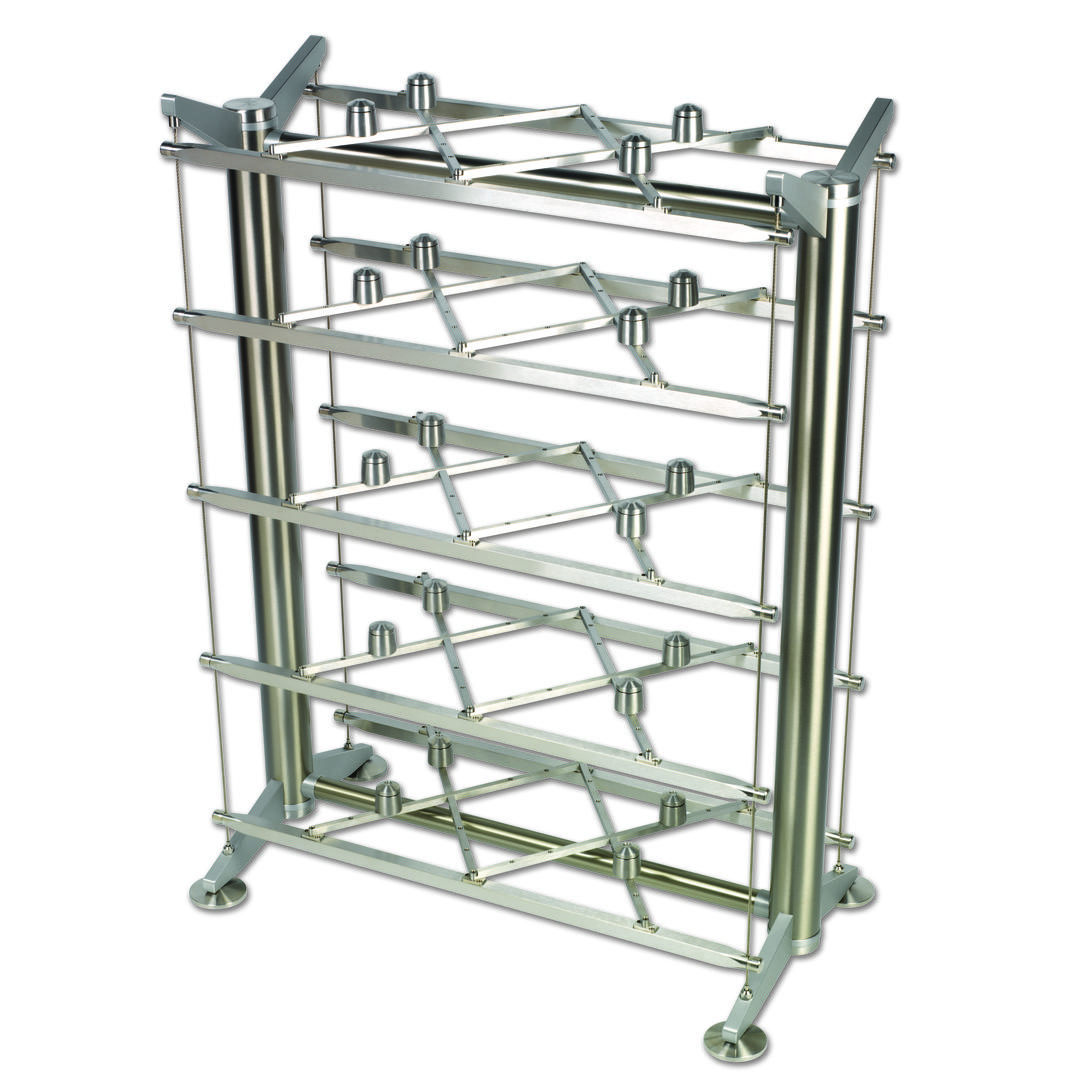
The easiest way to isolate a component from structure-borne vibration is by sliding an isolation base beneath it. A host of superb products exist to reduce the effects of structure-borne vibration and dissipate internally generated vibration. These include Gingko, Silent Running, Symposium, Bright Star, Townshend, Arcici, Signal Guard, etc.
Pneumatic isolation has become popular in the past, popularized first by Townshend then by Bright Star and Arcici and the Vibraplane. These devices are extremely effective barriers to the extremely difficult to control low-frequency vibrations.
In cases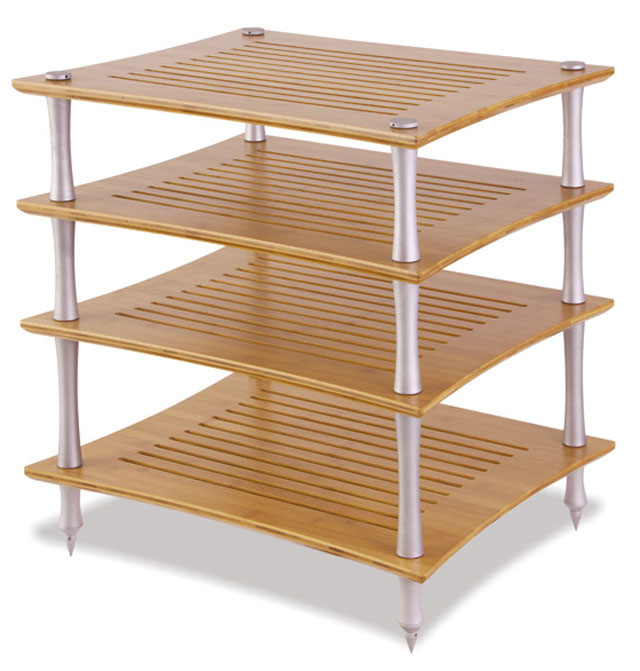 where the amplifier is to be located on the floor near the speakers, amplifier isolation bases are highly recommended. Tube and hybrid gear will experience the greatest improvement, but solid-state equipment is likely to benefit as well. The practical aspects of improved air circulation (for better cooling) and the enhanced cosmetic appeal that these bases offer, should not be overlooked. Most use spikes to ensure tight coupling to the floor.
where the amplifier is to be located on the floor near the speakers, amplifier isolation bases are highly recommended. Tube and hybrid gear will experience the greatest improvement, but solid-state equipment is likely to benefit as well. The practical aspects of improved air circulation (for better cooling) and the enhanced cosmetic appeal that these bases offer, should not be overlooked. Most use spikes to ensure tight coupling to the floor.
Speakers, the component responsible for producing the vibrations we seek to quell, require careful placement techniques to ensure the best performance and least interference. Spikes are certainly the popular way to couple loudspeakers speakers. These devices can be particularly effective when the speakers are to be placed on a concrete slab foundation. Here, the great mass of the concrete slab serves as an effective "sink" for the vibrations created by the motion of the loudspeaker enclosure. Hard-coupling speakers (using spikes) to a suspended wood floor, however, can, in some cases cause problems. The floor can act as a kind of "sounding-board," set into resonance by the vibrations of the speaker. Some listeners find decoupling the speakers from the floor improves performance under these conditions. For many, Stillpoints offer the best of both worlds, providing the advantages of hard coupling (spikes) with decoupling to reduce vibration transmission.
Designers and Engineers are advancing the art of controlling vibrational energy at the component level, but still more needs to be done. We can dramatically improve performance with external methods of vibration control. As with many other ideas, the curious audiophile is likely to find significant improvements through experimentation. Take the time to employ some of the ideas discussed here and I think you will find new levels of performance lurking within your system, just waiting to be discovered!
SUMMATION:
- Do not place equipment in corners or directly behind speakers, especially planar designs.
- Locate components and loudspeakers on a rigid, non-resonant support. Avoid enclosing equipment in cavities that will act as resonant chambers.
- Experiment with cones, soft decoupling feet, or isolation feet or bases under all components.
- Consider placing floor-mounted amplifiers on isolation bases.
- Experiment with tube damper rings and/or isolation sockets on tubed electronics.
- If you enjoy more advanced projects, consider damping internal circuit components, circuit boards, and equipment chassis.

